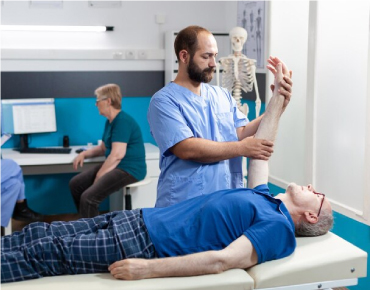- Home
- Blog Details
Physiotherapy in India: Challenges, Opportunities, and the Path Forward
 27 September, 2023
27 September, 2023
Physiotherapy in India: Challenges, Opportunities, and the Path Forward
Physiotherapy, often referred to as the 'newcomer' in India's vast healthcare landscape, has been steadily gaining recognition and importance. In a country where modern medicine, represented by MBBS, has a history spanning over two centuries, physiotherapy's emergence, roughly 50-60 years ago, presents a unique set of challenges and opportunities.
Historical Perspective
Comparing physiotherapy to the well-established MBBS field highlights a stark contrast. The remuneration and respect accorded to MBBS professionals far outstrip what is typically seen in the world of physiotherapy. The reasons behind this disparity are multifaceted.
Socio-Economic Factors
India is a diverse nation, where a significant portion of the population is either illiterate, reliant on agriculture, or engaged in daily wage labor. This demographic reality, coupled with the historical penetration of MBBS, has led to a situation where many people have limited awareness of the term "physiotherapy." To them, a 'doctor' often encompasses a broad spectrum of medical professionals. This lack of awareness is rooted in both the Indian education system and the economic disparities prevalent in the country.
The Medicine-Centric Perspective
In the eyes of the common Indian citizen, medicine is synonymous with pills and injections. This perception stems from the overwhelming reliance on medication, whether allopathic, Ayurvedic, or Unani, for treating ailments. MBBS professionals are seen as early birds in the medical field with extensive penetration in both urban and rural areas.
Physiotherapy, in contrast, is still in the process of exploring markets. While it is gradually gaining traction in urban areas, reaching rural and economically disadvantaged communities remains a challenge. Few daily wage workers, farmers, or local store owners are willing to invest in regular physiotherapy sessions. In essence, it tends to be a treatment more accessible to the upper middle class and the affluent sections of society. NGOs, government-aided hospitals, and welfare camps play a critical role in extending physiotherapy services to rural and marginalized populations.
A Different Approach to Healing
Unlike MBBS professionals who often diagnose and prescribe medication in a single consultation, physiotherapy requires a more extended commitment. Patients may need to attend sessions for at least a week before experiencing significant results. This difference in approach can lead to the perception that physiotherapy is a less matured profession.
Earnings and Respect
Earnings in the field of physiotherapy are closely tied to market penetration, the complexity of treatments, and the severity of ailments. Fresh graduates can earn between 20,000 to 30,000 rupees per month, with the potential for additional income from private patient visits. Experienced physiotherapists can earn even more, ranging from 30,000 to 1 lakh rupees per month, along with income from private practice.
A Tertiary Care Perspective
In the hierarchy of healthcare, physiotherapy often falls under tertiary care, especially in critical cases. For example, in stroke cases, the primary care comes from senior neurologists who diagnose and perform critical interventions. Nurses, representing secondary care, oversee various aspects of patient care. Physiotherapists, as tertiary care providers, come into the picture later, focusing on rehabilitation. Sessions are often short, but the demand is high in acute cases.
The Importance of Respect
Wearing a stethoscope in India can significantly influence how people perceive you in the healthcare field. This is an observation made during my internship, where individuals with stethoscopes were often referred to as 'doctors,' even by nurses. While this perception may not always be accurate or fair, it underscores the significance of attire and symbols of authority in healthcare.
Moving Forward
The journey of physiotherapy in India is one of growth and gradual acceptance. As the profession continues to evolve, there are several steps that can be taken to improve its status:
- Patience: Recognize that change takes time, and the profession is still relatively young in India.
- Awareness: Spread awareness among patients and the general public about the benefits of physiotherapy.
- Quality Improvement: Continuously work to enhance the quality of treatment provided.
- Professionalism: Maintain the highest ethical standards in practice.
- Attire: Present oneself in a professional manner, which can enhance respect from patients and peers.

Christine Eve
Lorem ipsum is simply free text used by copytyping refreshing. Neque porro est qui dolorem ipsum quia quaed veritatis et quasi architecto.







